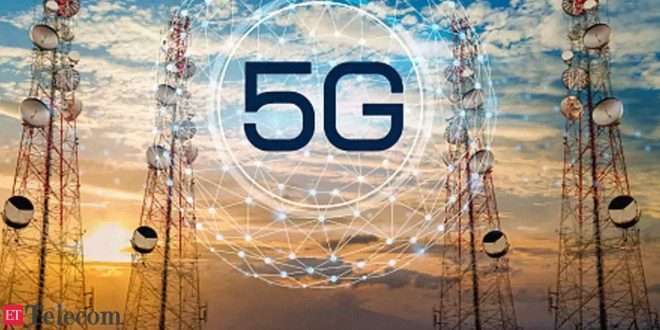Welcome to the future of connectivity, where the possibilities are boundless and the world is more interconnected than ever before. In this article, we delve into the world of 5G and beyond, exploring how this revolutionary technology is reshaping the way we live, work, and communicate. From web technologies to cloud computing, we unlock the true potential of connectivity in a way that goes beyond our imagination.
The Rise of 5G: Empowering the Connected World
The advent of 5G has heralded a new era in the realm of web technology. With its lightning-fast speeds and ultra-low latency, 5G has unlocked opportunities that were once considered futuristic. Web development technologies have been quick to adapt, creating applications and services that capitalize on the potential of 5G. From virtual reality to augmented reality, this advanced web technology is revolutionizing industries and propelling us into a new digital age.
Understanding Web Technologies: A Comprehensive List
To fully grasp the impact of 5G, it’s crucial to understand the array of web technologies that support its implementation. Here’s a comprehensive list of web technologies that have been instrumental in shaping the connected world:
HTTP/HTTPS:
The backbone of web communication.
HTML5 and CSS3:
The building blocks of modern web design.
JavaScript:
The language that brings interactivity to websites.
RESTful APIs:
Facilitating seamless data exchange between applications.
Progressive Web Apps (PWAs):
Merging the best of web and mobile applications.
WebAssembly:
Empowering high-performance web applications.
WebRTC:
Enabling real-time communication through browsers.
GraphQL:
Streamlining data queries and manipulation.
WebSockets:
Facilitating full-duplex communication between the client and server.
WebVR:
Creating immersive virtual reality experiences on the web.
Web Computing: Bridging the Gap Between Devices
With 5G and advanced web technologies, web computing has taken center stage. This paradigm shift allows devices to offload computation to remote servers, reducing their dependence on hardware limitations. Cloud computing plays a vital role here, providing the backbone for processing and storage capabilities. As web hosting services become more robust, we witness the seamless integration of devices, forming an interconnected ecosystem that transcends traditional boundaries.
Unleashing the Power of Cloud Technology
The cloud has become synonymous with innovation and scalability. As 5G paves the way for faster data transmission, cloud computing becomes even more indispensable. Organizations and individuals alike benefit from the flexibility and cost-effectiveness of cloud solutions. From Software as a Service (SaaS) to Infrastructure as a Service (IaaS), the cloud offers a wide array of services that cater to diverse needs.
Enhancing Connectivity: The Internet of Things (IoT)
In the era of 5G and advanced web technologies, the Internet of Things (IoT) has emerged as a force to be reckoned with. IoT devices connect seamlessly to the internet, sharing data and insights that lead to smarter decision-making. From smart homes to smart cities, IoT is transforming the way we interact with our surroundings. With the increased bandwidth and reduced latency of 5G, IoT applications can reach their full potential, delivering a more connected and efficient world.
Commonly Asked Questions
Q1: What is 5G, and how does it differ from previous generations of wireless technology?
A1: 5G is the fifth generation of wireless technology that offers significantly faster speeds, lower latency, and higher capacity compared to its predecessors. It enables a wide range of applications, from augmented reality to autonomous vehicles, that were not feasible with older technologies.
Q2: How does web computing leverage 5G and web technologies for better user experiences?
A2: Web computing leverages the power of 5G and advanced web technologies to offload computation to remote servers, reducing the burden on devices and providing seamless user experiences across various devices.
Q3: How does cloud technology contribute to the advancement of web applications and services?
A3: Cloud technology provides scalable and cost-effective solutions for hosting web applications and services, enabling businesses and developers to focus on innovation rather than infrastructure management.
Q4: What are some practical use cases of the Internet of Things (IoT) in the context of 5G and web technologies?
A4: IoT applications in the 5G era include smart home devices, connected healthcare solutions, industrial automation, and smart city initiatives, all of which benefit from the increased connectivity and reduced latency.
Q5: How can businesses leverage these technologies to gain a competitive edge?
A5: Embracing 5G, advanced web technologies, web computing, and cloud services empowers businesses to offer innovative products and services, reach a broader audience, and streamline their operations, ultimately gaining a competitive advantage in the market.
Final Words
The landscape of connectivity is rapidly evolving, with 5G and advanced web technologies at the forefront of this transformation. Embracing these technologies is key to unlocking a future where the potential of connectivity knows no bounds. From web computing to the Internet of Things, businesses and individuals alike have the opportunity to thrive in an interconnected world. The journey has just begun, and the possibilities are limitless.
 webfily
webfily



